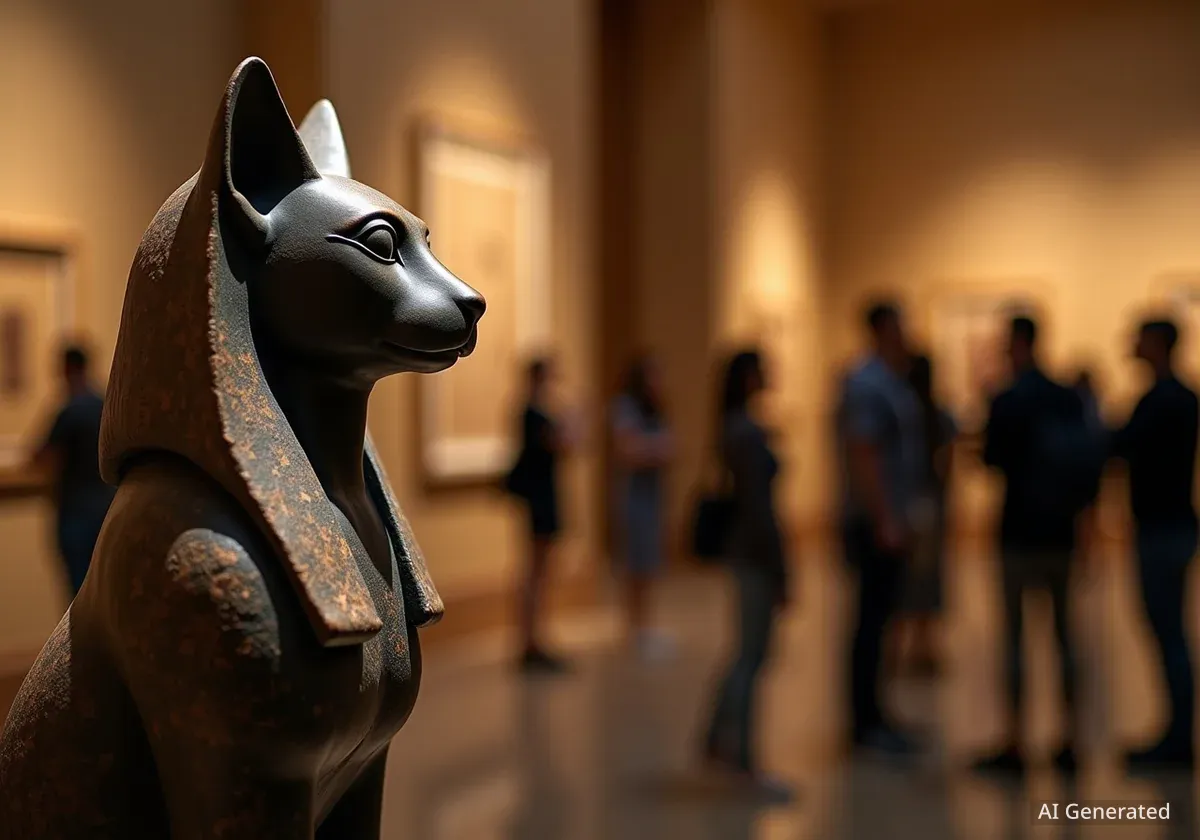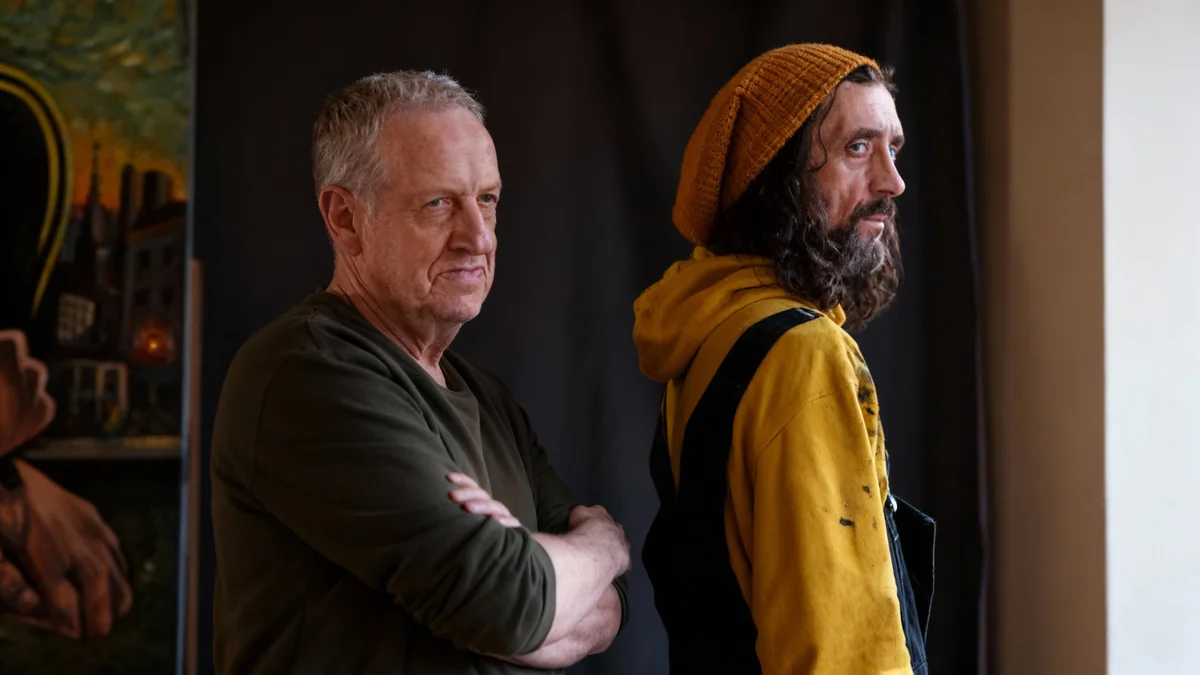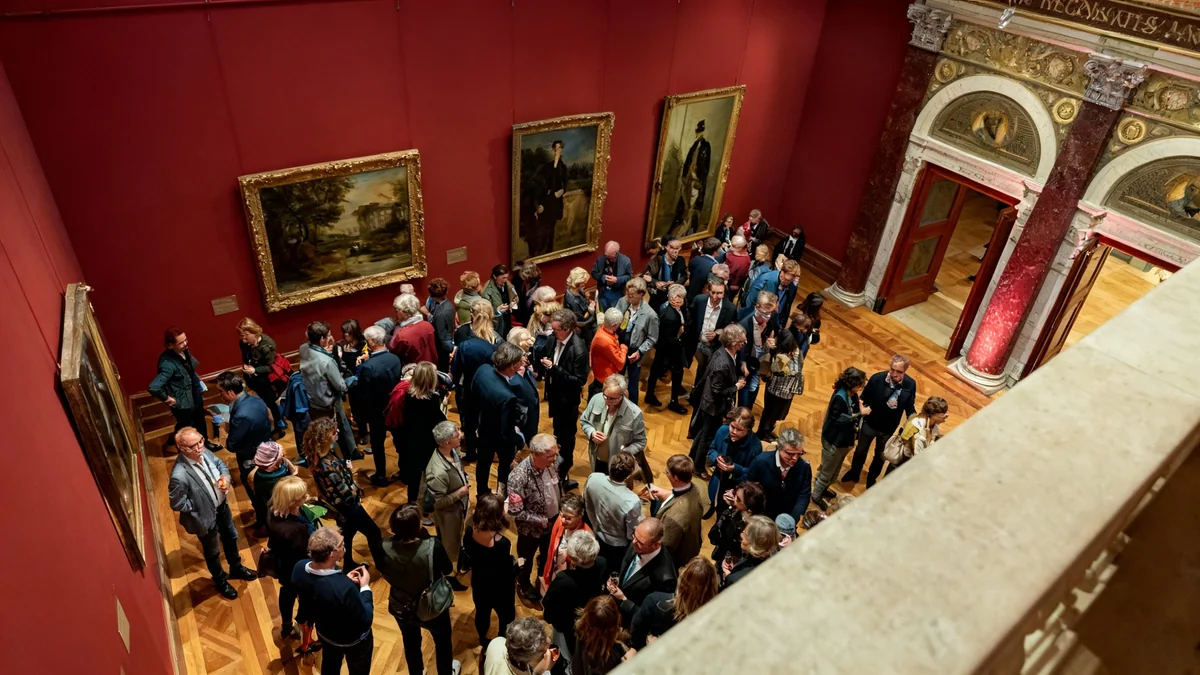The Metropolitan Museum of Art has unveiled a major exhibition titled 'Divine Egypt,' showcasing over 200 ancient Egyptian deities. This significant display, which opened on Sunday, October 13, 2025, marks the museum's first large-scale Egyptian art exhibition in over a decade. It features artifacts spanning more than 3,000 years, from colossal statues to intricate figurines, offering a deep exploration of ancient Egyptian spiritual beliefs.
The exhibition emphasizes spiritual intimacy rather than political power. It includes many goddesses among its collection of divine figures. Visitors can see both familiar and rarely displayed objects.
Key Takeaways
- 'Divine Egypt' is the Metropolitan Museum's first major Egyptian art show in 12 years.
- The exhibition features over 200 objects, including statues and figurines.
- It covers more than 3,000 years of ancient Egyptian art.
- The focus is on spiritual intimacy and the pantheon of gods and goddesses.
- Many pieces are from the Met's own collection, supplemented by international loans.
Exploring Ancient Egyptian Spirituality
The 'Divine Egypt' exhibition provides a comprehensive look at the complex world of ancient Egyptian deities. These figures were central to the concept of Eternal Life, a core belief in ancient Egyptian culture. The show presents a wide array of gods and goddesses, each playing a specific role in the cosmic order.
Many of the objects on display are goddesses. This highlights their importance in the ancient Egyptian pantheon. The exhibition avoids a focus on pharaohs or monumental displays of political might. Instead, it invites viewers to connect with the spiritual lives of ancient Egyptians.
Exhibition Details
- Number of Objects: More than 200
- Time Span: Over 3,000 years
- Opening Date: Sunday, October 13, 2025
- Location: Second-floor galleries, Metropolitan Museum of Art
The Role of Deities in Ancient Egypt
Ancient Egyptians believed their gods and goddesses governed all aspects of existence. These deities were seen as executive directors of the universe. They ensured the cycle of life, death, and rebirth. The exhibition illustrates this through various artistic representations.
For example, the relief of Maat, the goddess of social justice, is a notable piece. She is depicted wearing a feather in her headdress, symbolizing truth and order. This specific artwork underscores the moral and ethical dimensions of ancient Egyptian religion.
"The divinity alluded to in the exhibition title consists of a panoply of ancient Egyptian gods and goddesses, all executive directors of the cosmic enterprise called Eternal Life."
A Diverse Collection of Artifacts
The exhibition features a diverse range of artifacts. These include towering statues and small, gleaming figurines. Each object tells a part of the story of ancient Egyptian beliefs. The materials used vary widely, from stone to precious metals, reflecting the importance of these divine representations.
Many pieces come from the Metropolitan Museum's extensive collection. This collection is one of the most significant holdings of Egyptian art outside of Egypt. The exhibition also includes important loans from international institutions, enriching the display with unique items not typically seen together.
Background on Met's Egyptian Collection
The Metropolitan Museum of Art houses a world-renowned collection of ancient Egyptian art. It covers nearly every period of ancient Egypt's history. The collection includes approximately 26,000 objects, ranging from prehistoric times to the Roman period. This vast resource allows the museum to present comprehensive and historically rich exhibitions.
Artistic Styles and Materials
The objects in 'Divine Egypt' showcase the evolution of artistic styles over millennia. Early pieces often feature more rigid, stylized forms. Later works show greater naturalism and detail. The choice of material also conveyed meaning. Gold and precious stones were often used for objects associated with royalty and the divine, symbolizing their eternal nature.
Bronze figurines, for instance, were common offerings in temples. Stone statues, carved from granite or basalt, often represented major deities or pharaohs embodying divine power. The craftsmanship reflects the advanced artistic and technical skills of ancient Egyptian artisans.
Significance of the Exhibition
The 'Divine Egypt' exhibition is significant for several reasons. It offers a rare opportunity to see such a large collection of ancient Egyptian divine art. It also provides a fresh perspective, focusing on the spiritual rather than the political aspects of ancient Egyptian civilization.
According to museum curators, the show aims to foster a more intimate understanding of the ancient Egyptians' relationship with their gods. This approach allows visitors to appreciate the personal and communal dimensions of their faith.
Educational and Cultural Impact
The exhibition is expected to draw a large audience, similar to past major Egyptian shows. It serves as an important educational resource, offering insights into one of the world's oldest civilizations. Educational programs and guided tours will likely accompany the exhibition, providing deeper context for visitors of all ages.
The careful curation and presentation of these artifacts underscore the Met's commitment to preserving and sharing global cultural heritage. The display fills the galleries previously used for the 'Sargent and Paris' exhibition, demonstrating the museum's ability to host diverse and impactful shows.
The exhibition encourages visitors to reflect on the enduring power of belief systems and the artistic expressions they inspire. It reminds us that ancient cultures, despite their distance in time, grappled with universal questions about life, death, and the divine.




